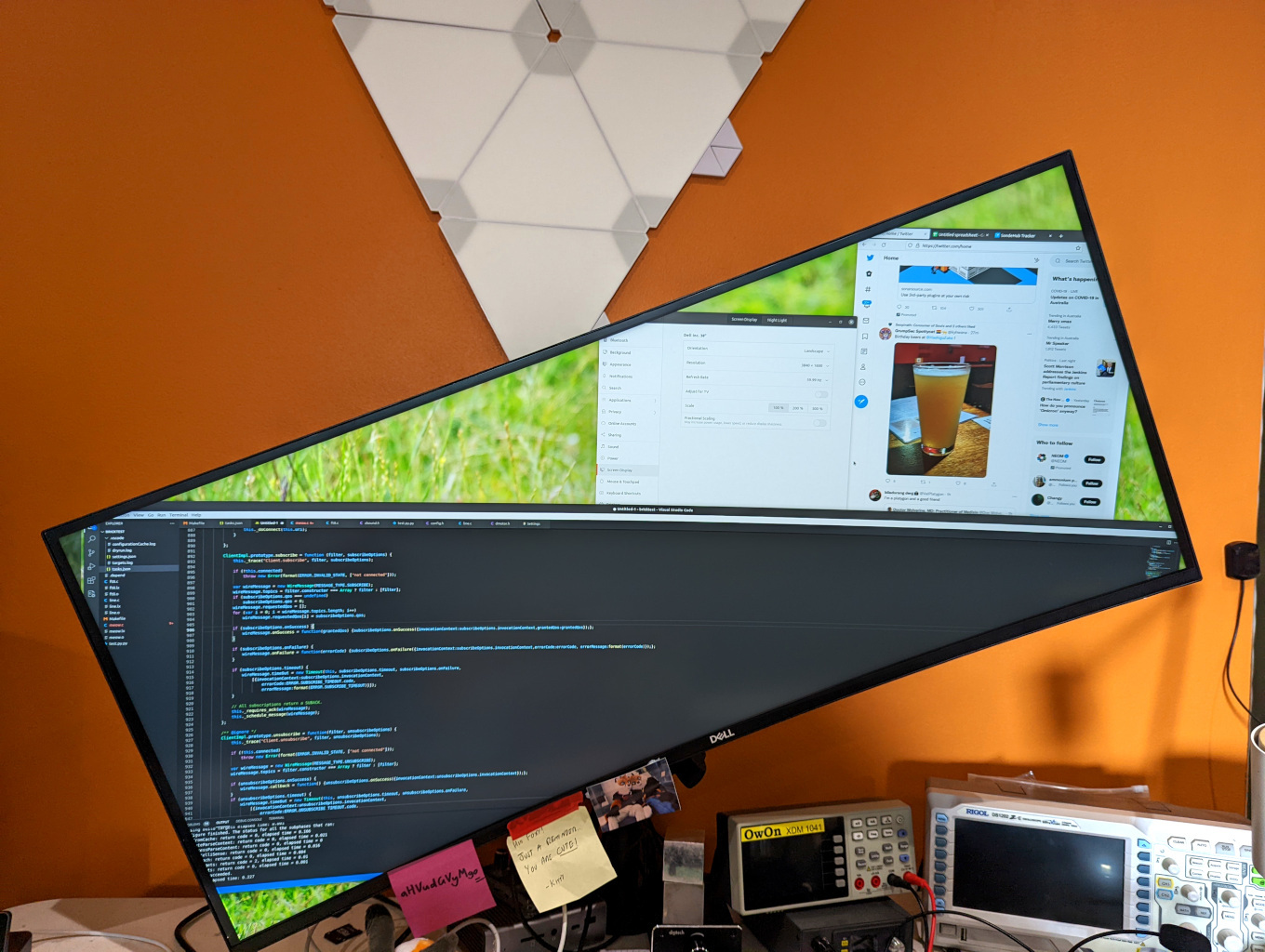I blame Daniel
- 3 Posts
- 71 Comments

 11·12 days ago
11·12 days agoI realized a few years ago that my GF inadvertently solved this issue for me: She likes registering for anything that provides a discount, so I use her phone number.
“Are you a member?”
“Nope, but my GF probably is…”, and 90% of the time I am correct.
In my book WSL and VM share the same downside in that you’re only abstracting Linux functionality in relation to the hardware.
Linux really shines when it has full access to the actual hardware as opposed to asking it’s environment nicely if it’s allowed to do something.
For example, I routinely need to change my IP address to talk to specific networks and network hosts, but having to step over the virtualisation or interpretation layer to do so is just another step, thus removing the advantage of running linux in the first place.
Sure, VMs and dual booting have their uses, but the same uses can be serviced by an actual linux install while also being infinitely more powerful.
I played around with WSL for a while, but you notice really quickly that it is not the real thing. I’ve used virtual box for some use cases, but that too feels limiting ad all of the hardware you want to fully control is only abstracted.
I would say that unless he has a really good reason why he wouldn’t want to go for dual boot, then he should do just that.

 61·2 months ago
61·2 months agoBy promoting the distros that have this as a goal, such as Mint.
I would suggest Ubuntu in this category, but… eww…
Pretty much when you posted that, I found this in my dmesg:
[ 715.744332] e1000e 0000:00:1f.6: Interrupt Throttling Rate (ints/sec) set to dynamic conservative mode [ 715.965683] e1000e 0000:00:1f.6: The NVM Checksum Is Not Valid [ 716.008541] e1000e: probe of 0000:00:1f.6 failed with error -5Just for the record, I compared modinfo up against lspci, and the PCI ID matches, so the driver should work. Is it possible to ignore the NVM checksum and try anyway? Because any tool I can find that communicates with the EEPROM on a hardware level is made for msdos.
Derp, I don’t think I ever did a modprobe. Anyway, I did an rmmod as I found out that there’s a newer version out, and I’m currently working on building the new version.
UPDATE: Newer version built, installed, and loaded.

 3·2 months ago
3·2 months agoWhich TNG episode is that really poorly rated one roughly 30% into the run?
EDIT: From the looks of the graph, it’s the season 2 finale. And when reading up on that episode, it’s a clip show hacked together to save on money, due to earlier episodes having gone over budget.
https://en.m.wikipedia.org/wiki/Shades_of_Gray_(Star_Trek:_The_Next_Generation)
“Shades of Gray” is widely reviled as the worst-ever Next Gen episode, with good reason. This isn’t an episode that makes anyone look good, and I don’t just mean Pulaski, Troi or LaForge – I mean the writers, director and producers of the series. Even Marina Sirtis and Diana Muldaur seem to be trying too hard to make the paper-thin storyline work, over-emoting and making absurd faces. The only person who deserves any kudos is Jonathan Frakes, who somehow manages to keep Riker his usual charming self."

 15·2 months ago
15·2 months agoThat’s more of an OnlyFans thing
I was thinking along the same lines. Use the online version available via portal.office.com, and use that to convert everything to something more FOSS-friendly.
Not sure if access is free, though.
I actually like that name, but it might be too close to the original for trademark comfort.
I for one really appreciate the effort of supporting non-AT drives despite the initial skepticism.

 11·3 months ago
11·3 months agoThe alternative was 5mbit/s VSAT. 4G was a luxury at that time.

 15·3 months ago
15·3 months agoI don’t remember how many files, but typically these geophysical recordings clock in at 10-30 GB. What I do remember, though, was the total transfer size: 4TB. It was kind of like a bunch of .segd, and they were stored in this server cluster that was mounted in a shipping container for easy transport and lifting onboard survey ships. Some geophysics processors needed it on the other side of the world. There were nobody physically heading in the same direction as the transfer, so we figured it would just be easier to rsync it over 4G. It took a little over a week to transfer.
Normally when we have transfers of a substantial size going far, we ship it on LTO. For short distance transfers we usually run a fiber, and I have no idea how big the largest transfer job has been that way. Must be in the hundreds of TB. The entire cluster is 1.2PB, bit I can’t recall ever having to transfer everything in one go, as the receiving end usually has a lot less space.
Counterpoint: https://xkcd.com/910/
Also, both hostname and username might fit a company schema that you want to anonymize.
For me this typically involves doing a search&replace for my username, hostname, and IP addres(es)

 3·3 months ago
3·3 months agoNot necessarily. It can be, but it all depends on which nodes you get when you connect. If I end up on slow nodes I usually just reconnect, and it’s fine.

 9·3 months ago
9·3 months agoiptables -I APPEALS -j DROP

 16·3 months ago
16·3 months ago“I hereby sentence you to two years on your own VLAN with no gateway”
I don’t have a solution for you, but to get you started, run xev and see which keycode event is triggered by the keypresses.

Previous job: Windows, because it was a company issued laptop. Plus a lot of the company was built around the MS ecosystem.
Current job: Linux, because I got to keep the perfectly decent Dell laptop when I left. I wanted to make sure I purged everything, so it’s running LMDE now. Plus, there’s not much outlook and teams stuff that I have to use.